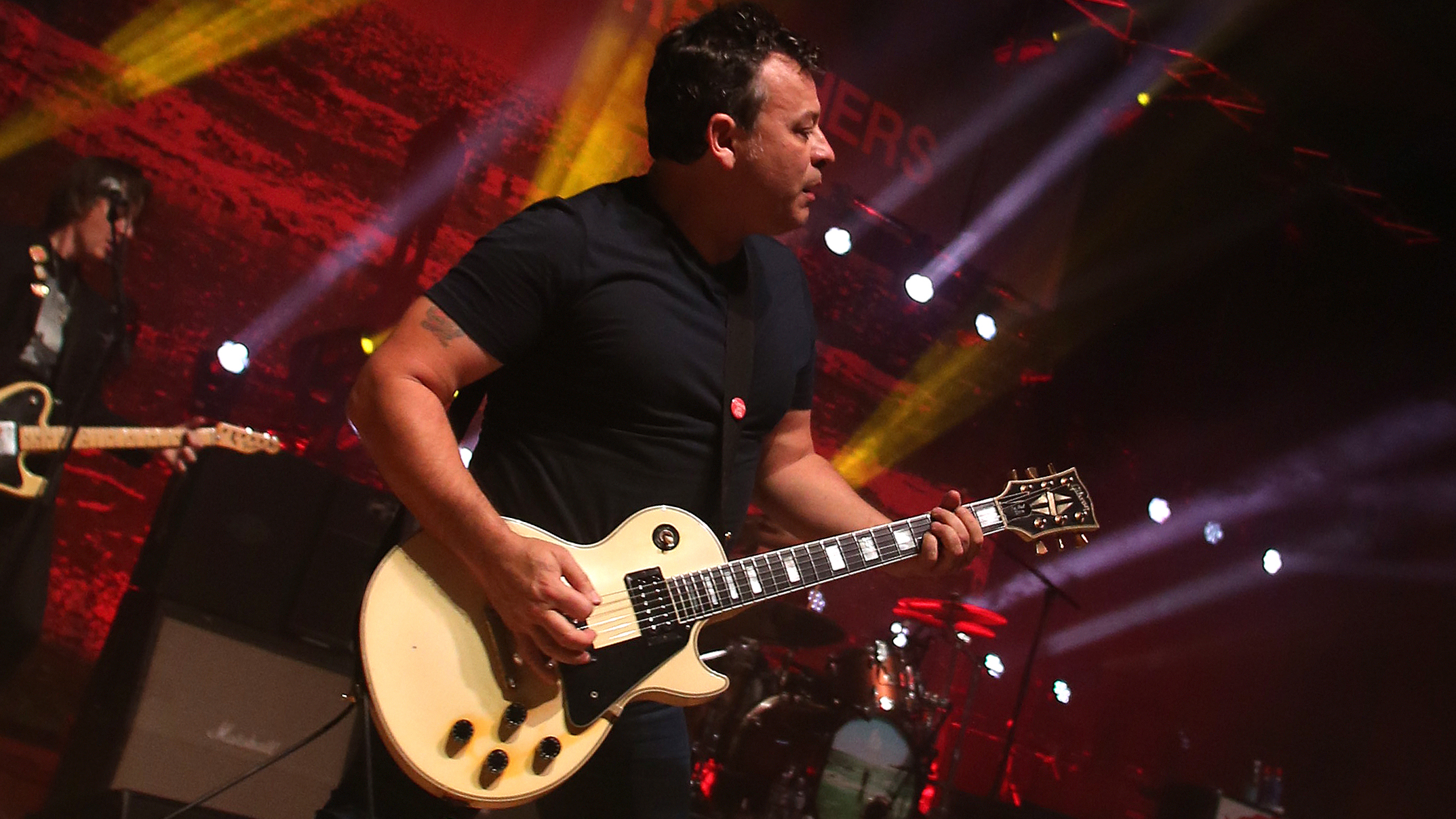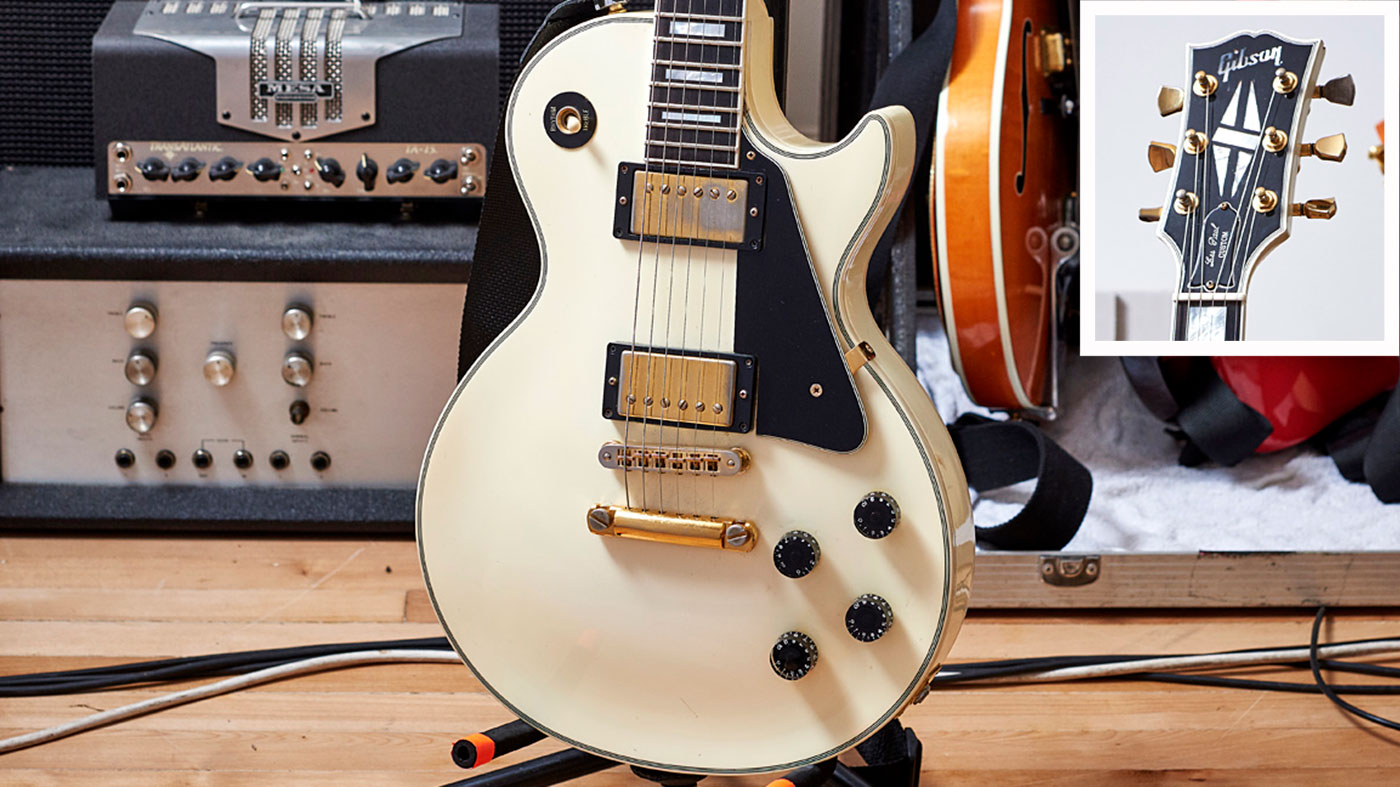5 ways to play guitar like Manic Street Preachers' James Dean Bradfield
Taking apart the Manics man's style, so you can put it together

After developing a love for The Clash, James Dean Bradfield formed Manic Street Preachers in 1986 with his childhood friends, then set about honing his guitar skills by meticulously learning the parts from Guns N’ Roses landmark album, Appetite For Destruction, in his parent’s front room.

The band’s left-wing political lyrics and androgynous glam rock image gained them a cult following in the early 90s. Then, following the tragic disappearance of bandmate Richey Edwards in 1995, the Manics found mainstream appeal with albums such as 1996’s Everything Must Go.
JDB’s rock chops are impressive as are his chord progressions, both of which we’ll look at here.
JDB's gear
James has used many guitars and amps over the years, but he says that “my sound” is still his Alpine White Gibson Les Paul Custom going into a Marshall JCM900 and a Boss Hyper Fuzz set with the fuzz knob down and the gain right up.
For these examples, use a clean to moderate drive sound, but try to avoid super-saturated distortion.
1. Symmetrical scale lines
We kick off with an ear-catching lead line, which bears a striking similarity to the E whole tone scale (E F# G# A# B# D), plus a few extra notes as embellishment.
It makes extensive use of legato and, while it’s not super-quick, it’s still tricky to articulate clearly, so break it up into small one-bar sections to begin with.
Want all the hottest music and gear news, reviews, deals, features and more, direct to your inbox? Sign up here.
2. Counterpoint riff
This riff for two guitars uses ‘counterpoint’ – two musical ideas featuring independent contours and rhythms.
One is playing a high doublestop phrase in E Dorian (E F# G A B C# D) while the other guitar plays a lower single-note line in E natural minor (E F# G A B C D). This step is a little reminiscent of Steve Stevens’ work with Billy Idol.
3. Pedal tone riff
This is a straight-ahead rock idea using an eighth note pedal tone figure based on an A major chord shape at the 5th fret.
Movement is provided on the third string chromatically, raising the C# (6th fret) up to F (10th fret) on the third string. A great way to add colour against a low pedal tone (here, A on the open fifth string).
4. Open string extended chords
There are numerous Manic songs that utilise more ‘expensive’ voicings than typical powerchords. Often these are generated by using open strings alongside fretted notes – the Everything Must Go album has plenty of great examples of this.
5. Flowing pentatonic sequence
Although not a shredder in the metal sense, James is certainly no slouch in the solo department. This final example highlights his fondness for flowing legato sequences. Take care with the position shifts and pay attention to your time keeping – legato runs can end up rushed.
Total Guitar is Europe's best-selling guitar magazine.
Every month we feature interviews with the biggest names and hottest new acts in guitar land, plus Guest Lessons from the stars.
Finally, our Rocked & Rated section is the place to go for reviews, round-ups and help setting up your guitars and gear.
Subscribe: http://bit.ly/totalguitar





